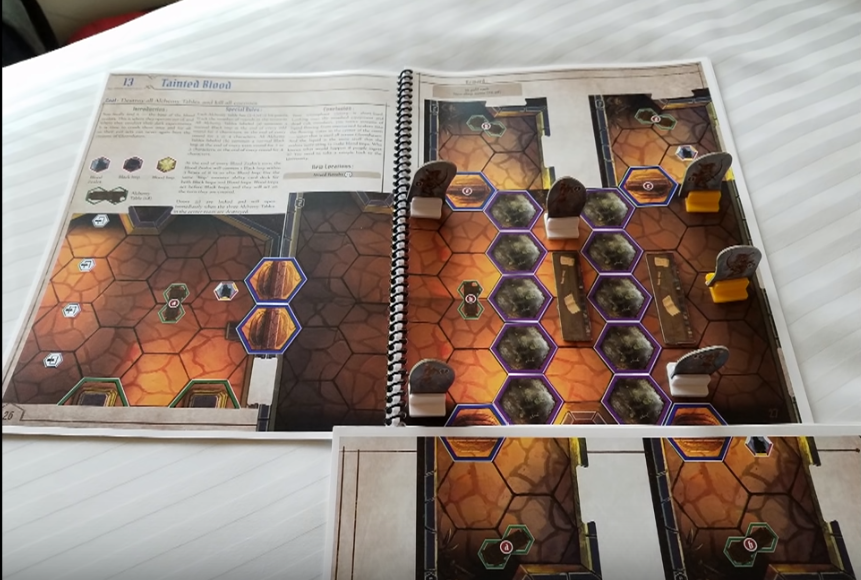
If players would like to track progress on other aspects of their character, they can do so here. If it contains materials for a new character class, that character class is now available for anyone starting a new character.


At certain times, the game will direct players to open one of these. Note that adding a card is different from returning a played card to an event deck, in which case it is placed on the bottom of the deck and the deck is not shuffled.Sealed Boxes And EnvelopesThe game box includes a number of sealed boxes and envelopes, each designated with a symbol or letter. Players will be directed to add or remove certain events from these decks over the course of the campaign.When a card is added to an event deck, the event deck should then be shuffled. A choice can contain multiple separate outcomes, some dependent on specific conditions.Icons directing players to either remove the event card from the game h or return it to the bottom of the corresponding event deck i after the outcome is resolved.When the game box is opened and the campaign begins, a shuffled city event deck and road event deck should both be created using city and road events 01 through 30. In this case, additional random side scenario rewards have no effect.City And Road Event CardsPlayers will have many opportunities to encounter city and road events throughout a campaign.ĭepending on which option the party chose, players should read the corresponding choice and ignore the other.The outcome of a choice g, which consists of a block of thematic text followed by the specific game play effects on the game in bold. It is possible to deplete the random side scenario deck. The drawn scenario is then immediately unlocked and its corresponding sticker is placed on the campaign map.The drawn scenario card is then removed from the game. In this case, additional random item design rewards have no effect.Random Side Scenario CardsWhenever a 'Random Side Scenario' is listed as the reward when looting a treasure tile, the looting players should draw a card from the random side scenario deck. It is possible to deplete the random item design deck. These cards look very similar to normal item cards, but have a blue back, shown at the right.When a card is drawn, the player should find the one additional copy of the drawn item with the same reference number in the deck of unavailable items and add both cards to the city's available supply of items.

When a personal quest is completed, the character will retire.Random Item Design CardsWhenever a 'Random Item Design' is listed as the reward when looting a treasure tile, the looting player should draw a card from the random item design deck. A character's personal quest is their primary reason for participating in a party.A personal quest card includes.A thematic description of the quest a.The specific requirements for completing the quest and the rewards for doing so b. This space also includes a track for checkmarks i attained through battle goals.More Cards Personal Quest CardsWhen a character is created, he or she is dealt two random personal quest cards and chooses one to keep, returning the other to the personal quest deck. Whenever a character gains a perk, they mark the one on the list they want.A space for additional notes h. The total amount of experience needed is written below each level c.Spaces to keep detailed notes on the amount of experience d and gold e a character has.A space to track all the items a character has in their possession f.A perk list specific to the character class g.


 0 kommentar(er)
0 kommentar(er)
